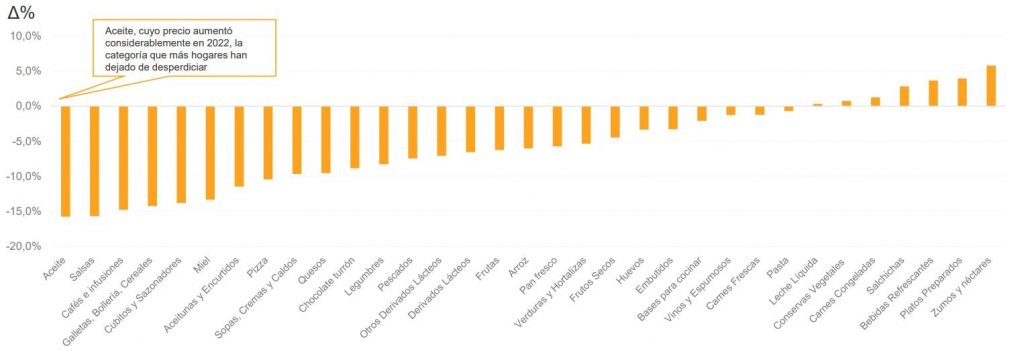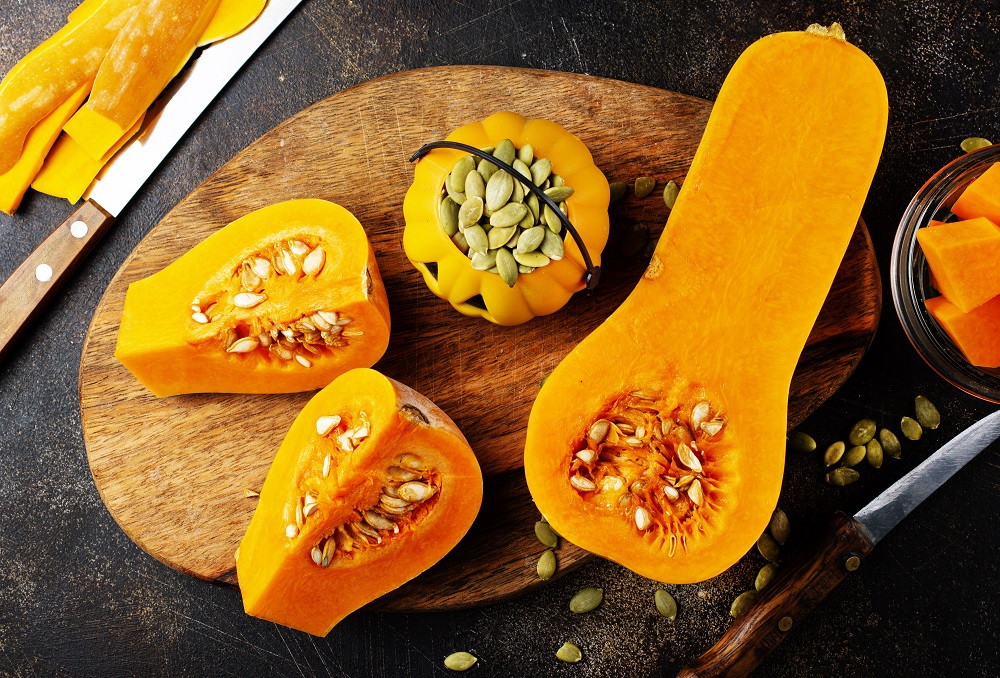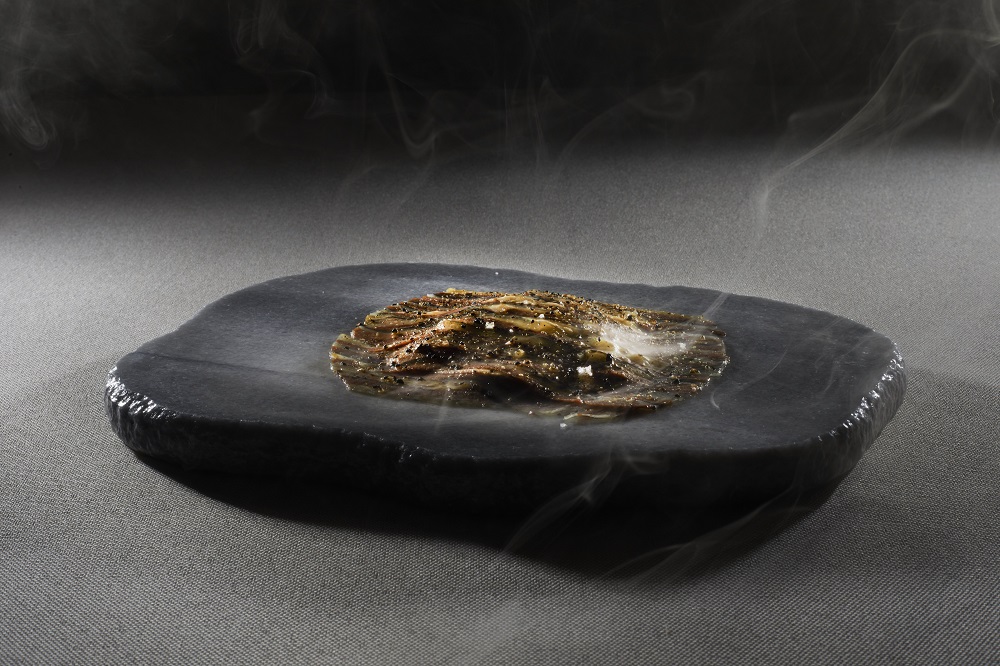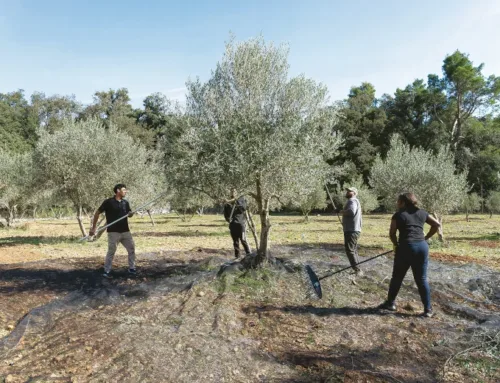While the family shopping basket continues to soar, with price increases of up to 66% for sugar or 56% for carrots, 64,000 tonnes of food are wasted every year in the Balearic Islands, or more than 50 kg per inhabitant. Most of it at home.
Poor planning, irresponsible consumption and a lack of knowledge when it comes to preserving food properly are behind the enormous waste that occurs in homes. Although in the country as a whole it has decreased by 6% compared to 2021, according to the Household Food Waste Report 2022, it is still a major social challenge.
More recipes in the bin
Although there has been a reduction in the disposal of unprocessed products – the case of fruit, which has a lot of weight in the rubbish bin, is notable – already cooked dishes are managed less well. In fact, their waste has increased by 6.7% in one year and is particularly marked in meat and fish-based recipes. Curiously, these are the products with the highest purchase price.

% Change 2022 vs 2021 Number of households wasting by type of unprocessed product. Source: Ministry of Agriculture, Fisheries and Food.
Tips with an impact on the wallet
Calculating portions, drawing up a weekly menu or making a list before going shopping can help families to avoid wasting food (and money). The Consumers and Users Organisation adds that recently bought products should be placed at the back of the fridge and older products at the front. It is also advisable not to open the packaging until you are sure that it is going to be consumed.
Grandma’s kitchen
Another option for disposing of everything that accumulates in the fridge is to use up leftovers. This involves reusing leftovers or those parts of food that are usually considered waste. It’s nothing new; our grandmothers used to do it. Old clothes, croquettes of all kinds… There are many examples of trash cooking. Also in haute cuisine.
The Michelin-starred chefs Santi Taura, from DINS Santi Taura, and Fernando P. Arellano, from Zaranda, wanted to share with Mallorca Global Mag readers two recipes to replicate at home.
Pumpkin blancmange | Santi Taura
Iconic dish of medieval cuisine in which 100% of the pumpkin is used: skin, seeds and pulp. “We base ourselves on tradition and make other recipes of this type, such as pancuit, a way of making the most of stale bread,” says Santi Taura.
In a pressure cooker, fry the following ingredients in a saucepan:
– 100 g olive oil.
– 1 kg of pumpkin skin trimmings and pumpkin seeds. If necessary, add some of the pulp to reach the weight.
– 400 g carrots, cut into pieces, cleaned and not peeled.
– 200 g chopped leek (the green part can be included).
– 25 g head of garlic, cut in half.
– 40 g parsley stalks.
– 4 g fennel seeds
– 2gr pepper
– 4gr fresh thyme
– 6gr turmeric
– 20gr salt

Once well fried and when it has acquired a little colour, add:
– 200 g of crushed tomato.
– 400 g of white wine
Allow to reduce and add 4.5 kg of water, cover the pressure cooker and bring to the boil. When the cooker ‘whistles’, reduce the heat to medium and cook for 30 minutes.
Leave to cool, infuse for a further 30 minutes, strain and set aside.
Menjar blanc spice mix:
– 15 g clove powder.
– 15 g ground nutmeg.
– 15 g cinnamon powder.
– 30gr ground coriander seeds.
– 40gr powdered ginger.
– 30gr cardamom powder
– 10gr ground black pepper.
– 40gr brown sugar.
Mix together and set aside.
Pumpkin blancmange:
In a saucepan put:
– 50 g clarified butter.
– 50 g rice.
– 125 g raw almonds.
– 12.5 g of menjar blanc spices.
Sauté briefly and add:
– 2.5 kg of pumpkin stock.
– 500 g whole milk.
Leave to cook until the rice is cooked, bind with cornflour.
Add 200 g of cream, 25 g of rose water and pass through the Thermomix in batches of 1 min.
Strain and weigh. Should yield 2.5 kg. If not, reduce and salt.
Roast pumpkin with menjar blanc spices:
– 2 kg of pumpkin cleaned of skin and seeds and cut into regular cubes.
– 20 g of menjar blanc spices.
– 100 g clarified butter.
– 14 g salt
Mix everything well and bake in the oven in a gastronorm covered with aluminium foil for 30 minutes at 210 degrees with 20% humidity.
After 30 minutes, uncover and bake for 5 minutes with the tray uncovered.
After 5 minutes, using a spatula and taking care not to break the pumpkin, turn the pumpkin pieces up and down and roast for a further 5 minutes.
Leave to cool and set aside.
Roasted pumpkin seeds:
– Toast in oven or pan, allow to cool and dress with a little pumpkin seed oil and salt.
Pumpkin juice:
– 1 kg pumpkin stock, reduce to 300 g, lightly bind with cornflour, season with salt and add 10 g rose water.
This should yield 300 g. If it does not come out, reduce further.
To serve:
Heat the roasted pumpkin with a little of its juice so that it envelops and soaks well.
Emulsify the menjar blanc with a blender so that it foams slightly on the surface.
Serve the roasted pumpkin with its roasted seeds on a plate and serve a separate jug of menjar blanc to finish the dish.
Vitello tonnato | Fernando P. Arellano
Made from veal tongues and tuna skin, it also uses a vitello tonnato sauce and foam, ratatouille potato mousseline, homemade mayonnaise and green onions, among other ingredients.
Cooking the veal tongue:
- 4 tongues
- ½ kg. spiced salt
- ½ kg. lard
Cover the defatted tongues with the spice salt and leave to marinate for 10 hours. Rinse them, dry them well with a cloth and pack them with the lard.
Steam them at 72 degrees for 40 hours. Cool in ice water.
Peel them.
Spiced salt for marinating the tongue:
– 3 kg of common fine salt.
– 200 g sugar.
– zest of 2 oranges
– zest of one lemon
– 4 stars of star anise.
– 5 cloves.
– 15 juniper berries.
– 1 tablespoon of 5 Chinese spices.
– 1 tablespoon green pepper.
– 1 tablespoon fennel.
– 1 tablespoon black pepper.
– 1 tablespoon cardamom.
– 1 tablespoon ground ginger.
– 1 tablespoon coriander seeds.
– 1 tablespoon paprika de la Vera.
– 1 pinch of nutmeg.
– 10 cloves of garlic.
– A good bunch of thyme.
Cooking the tuna skins:
Steam the whole tuna skins at 90 degrees for 7-8 minutes. Clean of meat and scales while hot. Spread on greaseproof paper and pack with 1% salt and 10% garlic oil by weight.
Cook in steam oven for 40 h at 90 degrees.
Cool in water and ice.
Tuna and tongue terrine:
Cut the tongue into thin slices of about 0.5 cm.
Select a metal bowl about 8 cm deep.
Arrange the tuna skin and the tongue slices alternately in the bowl until they reach the edge of the bowl.
Vacuum-pack in a cooking bag and pasteurise the terrine at 72 degrees, until it reaches at least 69 degrees.
Cool immediately and set aside. Every day, cut into slices and smoke.

Vitello tonnato sauce base:
100% canned tuna.
100% homemade mayonnaise.
25% capers.
10% caper vinegar.
10% raw spring onion.
5% anchovies.
Grind everything except the mayonnaise. Add the mayonnaise and pass through a fine sieve.
Warm vitello tonnato foam:
100% base sauce.
25% chicken stock.
Mix and fill the siphon. Keep at 50 degrees.
Potato mousseline:
100 % boiled ratte potato.
33 % butter.
30 % milk approx.
Vitello tonnato mousse.
Once cooked, peeled and mashed, add the diced cold butter to the potato, working the mixture vigorously. Lighten with the boiling milk and work with a whisk. Strain through a fine sieve.
Keep warm and lighten with the vitello foam just before serving.
Homemade mayonnaise:
40 g pasteurised egg yolk.
40 g Dijon mustard.
100 g virgin olive oil.
400 g sunflower oil.
2 g fine salt.
Pickled onions:
100 % onions.
30 % white wine vinegar.
30 % apple cider vinegar.
20 % sugar.
Boil the unpeeled green onions for 1 min. Cool in ice water and peel.
Cut in half or leave whole if very small.
Heat the rest of the ingredients to prepare the pickling liquid. Add the onions as soon as it boils and cool in it.
Others:
Blanched fine green beans (bobal variety).
Diced tuna mojama.
Diced capers.
Sawdust for smoking.







Leave A Comment